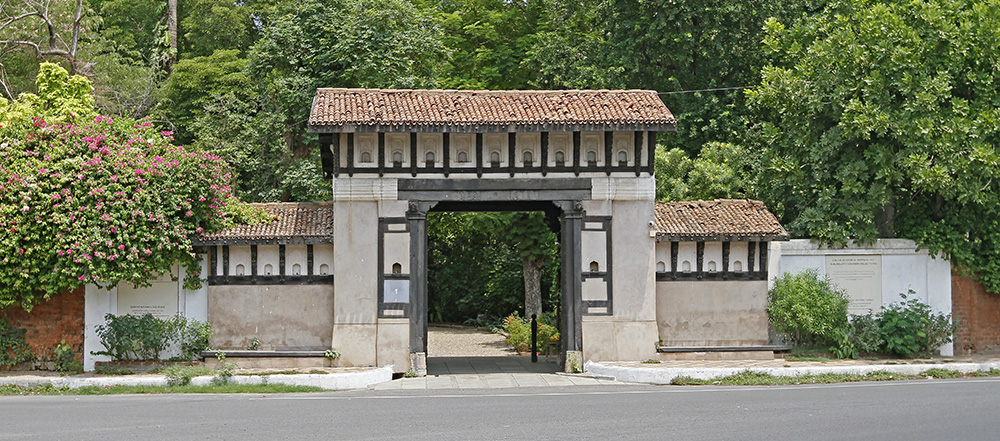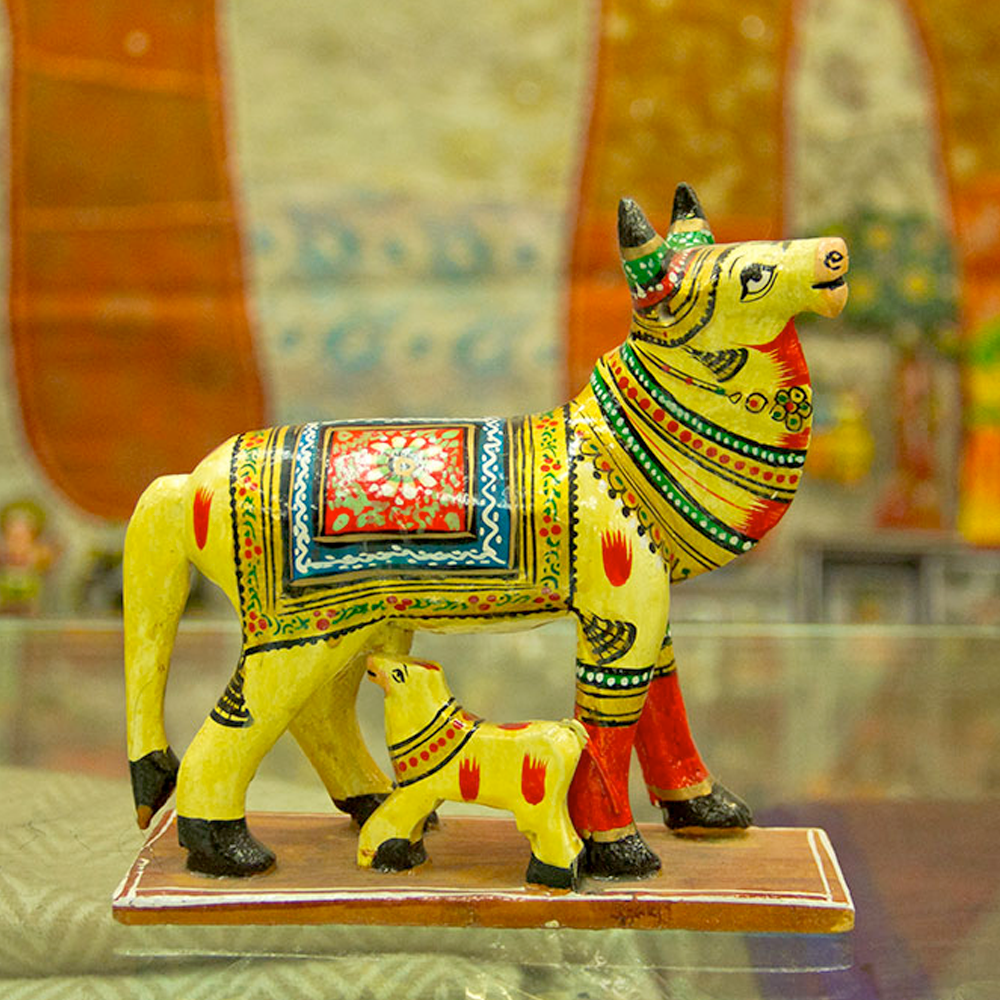
Calico Museum of Textile
Calico Museum of Textiles exhibits one of the finest collections of historical and modern Indian textiles anywhere in the world. The religious and secular materials have great historical, artistic, and intrinsic value. Some are more than 300 years old.
The idea of opening a textile museum in the textile-producing city of Ahmedabad was introduced by a pioneer historian of Indian art and one of the foremost interpreters of Indian culture to the West, Dr. Ananda Coomaraswamy at a time when Indian textiles were in danger of losing their excellence and popularity.
In 1949, the textile museum was founded at Ahmedabad Manufacturing & Calico Printing Mills Company Limited (popularly known as Calico Mills) by Gautam Sarabhai and his sister, Gira Sarabhai. It was inaugurated by Jawaharlal Nehru, India's first prime minister.
The museum was shifted in 1982 to the Sarabhai Foundation's estate called The Retreat, which includes Sarabhai-ni-Haveli with its formal garden and water features, designed in the 1930s by Surendranath Kar of Shantiniketan for Ambalal and Sarladevi Sarabhai who were the parents of Gautam and Gira Sarabhai.
The museum's setting itself is extremely attractive - it occupies a grand residential mansion of the Sarabhai family that once owned one of the largest textile mills in Gujarat. This mansion has been adaptively reused to house the museum's outstanding textile collection. The building is set in botanically-interesting gardens filled with water features and decorative elements.
Inside, the museum tastefully displays various textiles like shawls from Kashmir, phulkaris (floral embroideries) from Punjab, embroideries and tie-dye of Gujarat, ikat saris from different parts of India, kalamkaris, royal wardrobes, outstanding carpets, Balushar saris, Paithani saris, Kanchipuram silks, and fabrics made in India for international trade. The religious collection has devotional paintings on cloth, evocatively displayed temple clothes and illustrated Jain manuscripts.
The museum divides into two sections – the religious textiles are housed in an area called the Haveli, and the secular materials in the Chauk around the courtyard. At the heart of the museum, the Chauk is surrounded by exquisitely carved wooden façades of ‘Havelis’ rescued from different places where they were in danger of being demolished and reassembled around a former swimming pool of the family.
The guide’s narration is well-detailed and introduces visitors to the genius of Indian weavers and artisans associated with ancient textile arts. You can see the Kashmiri shawls, patolas woven using the double ikat technique that involved individually tie-dyeing each warp and weft before weaving, fragments of Indian textiles recovered in Egypt, tie-dye, sarongs that were made for export to Bali, window curtains and chintz made for the Portuguese and British markets, specimens of rare silk-and-cotton mashru weaving, exquisite embroideries, printed fabrics, Chamba Rumal or handkerchiefs from Chamba that were used for gift wrapping, the extravagant zari work saris with heavy gold stitching, and elaborately embellished clothing from the Princely States of India. The piece-de-resistance is the collection of tent panels in the Calico Museum of Textiles at Ahmedabad, with excellent specimens of tent roofs. The tent collection includes the exquisite kinkhab tent of Shah Jahan, who was once the Governor of Gujarat.
The religious section is equally impressive. It has an outstanding collection of pichvai and other temple paintings, miniature paintings with religious themes, temple decorations, and the Jain collection of painted palm leaf manuscripts and mandalas centres around a replica of a haveli temple.
The museum also has interesting pieces of furniture, some fine bronzes and the palanquin of Ahilya Holkar.
MOST POPULAR ATTRACTION
Must Visit For ● A tastefully displayed collection of textiles of immense historical, artistic and intrinsic value. ● Art and artifacts. ● Architecture and museum design. ● Botanically-interesting garden. ● Specialty book shop.
NEARBY SITES
Spiritually Significant, Religious sites - Hinduism, Sites with QR Codes
Ahmedabad’s Popular, Independence era, Historic Monuments, Sites With Audio Guides, Sites with Bluetooth Beacons
Ahmedabad’s Popular, Mughal era, Museums and Institutes, Sites With Virtual Tours, Sites With Audio Guides, Sites with Bluetooth Beacons
Sites with QR Codes, Historic Monuments
NEARBY AMENITIES





APPROXIMATE TIME REQUIRED TO VISIT
02 Hour 30 Minutes
THINGS TO KNOW
Open : Tuesday To Sunday , Note : Monday closed. Museum Guided Tour Timings: Morning tour: 10.30 Hours to 13.45 Hours Afternoon tour(Garden Tour): 15:00 Hours to 17.00 Hours The Guided Tours are free. Museum Rules: ● Pre-registration for the tour is mandatory. You have to provide the full name, phone number, email id, residential address and profession of all those enrolling for the tour. ● Because of the textile's fragile nature, the maximum number of visitors per tour is restricted to 20. It is therefore recommended that tour registration is done well in advance. ● Photography and videography are prohibited. ● No handbags or baggage, cameras or mobile phones are allowed in the museum. Additional Facilities: There is an excellent book shop with highly informative publications about Indian textiles, black and white photographs, color prints, reproductions of selected pieces on cloth or paper, postcards and souvenirs. Contact Details: Sarabhai Foundation – Calico Museum of Textiles, The Retreat, Opp. Under bridge, Shahi bag, Ahmedabad-380004, Gujarat, India. Phone between 10.30 Hours to 13.45 Hours or 14.45 Hours to 18.00 Hours. (Except Monday and Bank Holidays): +91-79-22868172, +91-79-22865995. Mobile: +91-97260 89595 General inquiry email: calicomuseum@gmail.com For tour booking: booking.calicomuseum@gmail.com Website: https://www.calicomuseum.org
Timings :10:15 TO 13:30
Entry Fee : Free







 Explore Ahmedabad
Explore Ahmedabad Ageless Ahmedabad
Ageless Ahmedabad Heritage Walks
Heritage Walks Tourism Packages
Tourism Packages Glimpses of Ahmedabad
Glimpses of Ahmedabad Helpline & Information
Helpline & Information Search for Heritage Sites
Search for Heritage Sites

